When to Harvest Leaf Lettuce
Leaf lettuce, with its tender and vibrant leaves, offers a delightful addition to salads and sandwiches. However, achieving the perfect balance of flavor, texture, and nutrition relies heavily on knowing when to harvest it. In this article, we delve into the intricate process of timing leaf lettuce harvesting to ensure your harvest is as rewarding as it is delicious.
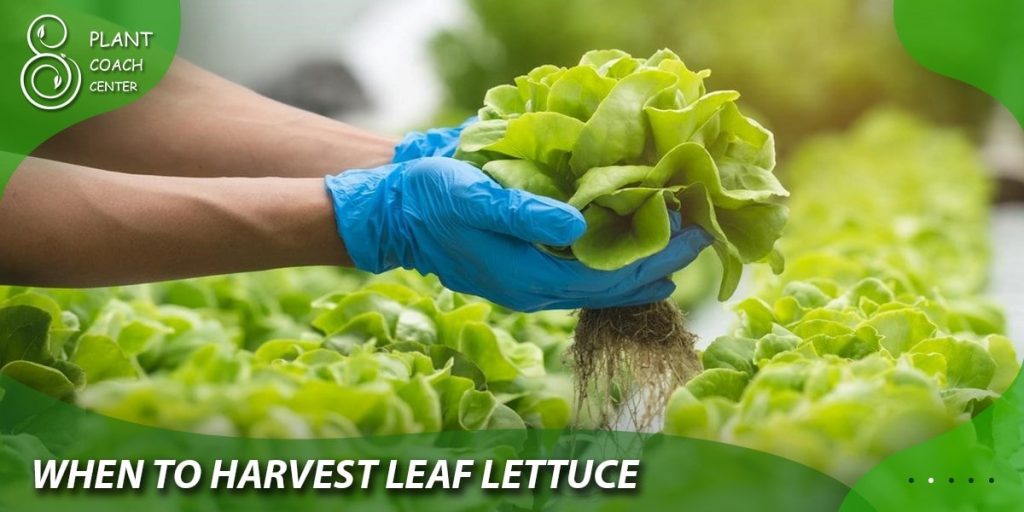
Understanding Leaf Lettuce Growth Stages
Leaf lettuce, a symbol of freshness and crispness, undergoes distinct growth stages on its journey from tiny seeds to delectable salad greens. Each stage is marked by unique characteristics that guide the gardener in determining the optimal time for harvest.
A. Seedling Stage: Nurturing Beginnings
At the outset, the life of a leaf lettuce plant emerges as delicate seedlings. Tiny embryonic leaves, known as cotyledons, break through the soil’s surface, nourished by the energy stored in the seed. These initial leaves are not true leaves but serve as the plant’s first energy factories. It is important to exercise patience during this stage, allowing the seedlings to establish a robust root system. Strong roots provide the foundation for healthy growth and ensure that the plant is adequately anchored to the soil.
As the seedlings progress, the true leaves make their appearance. These true leaves are characterized by their distinct shape and texture, setting them apart from the cotyledons. While it might be tempting to consider harvesting at this stage, restraint is advised. Allowing the seedlings to develop more true leaves and mature a bit further will contribute to the overall vigor of the plant.
B. Rosette Stage: The Art of Unfurling
With time and care, the leaf lettuce seedlings evolve into the rosette stage, a visual spectacle of nature’s artistry. The plant’s leaves gracefully unfurl, forming a circular arrangement that resembles a rosette. This phase is pivotal in gauging the plant’s readiness for harvest.
Take note of the arrangement and size of the leaves within the rosette. An ideal rosette is characterized by a compact structure, with leaves curving gently inward. The center of the rosette should house the younger, smaller leaves, gradually transitioning to larger leaves as you move outward. This growth pattern ensures an optimal distribution of nutrients and sunlight, contributing to the plant’s overall health.

C. Mature Stage: The Culmination of Flavor and Texture
As the leaf lettuce plant reaches the mature stage, its leaves have attained the desired size and texture that make them a culinary delight. These leaves are tender, yet substantial enough to provide a satisfying crunch. They are rich in color and brimming with the potential for taste and nutrition.
However, the distinction between a perfectly mature leaf and an overmature one is subtle but significant. Timing plays a crucial role in preserving the ideal attributes of the leaves. Overmature leaves may develop a tougher texture and slightly bitter taste, diminishing their culinary appeal. Moreover, the risk of bolting – the plant’s instinctual response to reproduce by flowering prematurely – looms as the plant ages. Bolting can lead to a rapid decline in leaf quality and taste.
Therefore, the transition from the rosette to the mature stage is a critical window. This is the juncture where experience and attentive observation come into play. Harvesting at the peak of the mature stage ensures that your leaf lettuce delivers the ultimate combination of flavor, texture, and nutritional value. Remember, the goal is not only to harvest at the right time but also to celebrate the plant’s journey from a humble seedling to a delectable salad ingredient.
Determining the Right Time for Harvest
As you embark on your leaf lettuce harvesting journey, the art of discerning the perfect moment for harvest becomes your guiding skill. The confluence of leaf size, texture, color, and growth rate serves as your compass in this quest for culinary excellence.

A. Leaf Size and Texture: A Delicate Balance
The leaves of leaf lettuce provide a tactile connection to the plant’s readiness for harvest. Achieving the right balance between size and tenderness is paramount. Aim for leaves that have reached a substantial size, yet have not crossed into the realm of being overly large. These leaves embody the ideal combination of flavor concentration and palatable texture.
When evaluating leaf readiness, a gentle squeeze between your fingers is an informative gesture. Leaves that yield to slight pressure and feel crisp without being rigid are indicative of their prime state. Their pliable and succulent nature makes them a joy to consume, adding the perfect crunch to your culinary creations.
B. Color and Appearance: Nature’s Vibrant Palette
Visual cues provided by the color and appearance of the leaves offer valuable insights into the plant’s health and vitality. Vibrant green leaves are not merely aesthetically pleasing; they are a vibrant testimony to the plant’s robust photosynthetic activity. This photosynthesis, the process by which plants convert sunlight into energy, contributes significantly to the overall taste and nutritional content of the lettuce.
Exercise caution when considering leaves that display colors other than green. Yellowing, browning, or spots on the leaves can be indicative of stress, disease, or nutrient deficiency. Such leaves are best left on the plant, allowing it to direct its energy towards healthier growth. By opting for vibrant green leaves, you ensure that your harvest embodies the essence of vitality and flavor.
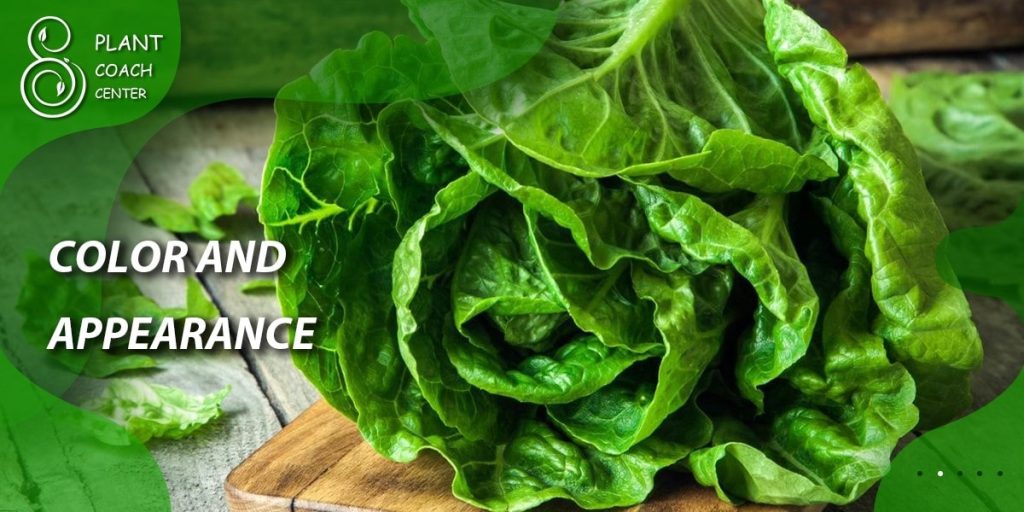
C. Growth Rate Observation: A Story in Motion
The growth rate of your leaf lettuce provides a narrative of its journey towards maturity. Regularly observing this rate offers valuable insights into the plant’s overall health and potential trajectory. A consistent and steady pace of leaf development indicates favorable growing conditions and a harmonious journey towards harvest.
However, be attentive to sudden spurts of growth. While rapid growth might seem promising, it can be a subtle precursor to bolting – the plant’s biological response to environmental stress. Bolting can curtail the plant’s leaf production and result in a decline in overall leaf quality. As you monitor the growth rate, keep a watchful eye on any signs of elongated stems or the appearance of flower buds, which are key indicators of imminent bolting.
In essence, the growth rate observation complements the other factors in determining the optimal time for harvest. It adds depth to your understanding of the plant’s behavior, allowing you to make informed decisions that align with the plant’s unique journey of growth and maturation.
With these three facets – leaf size and texture, color and appearance, and growth rate observation – harmoniously working together, you possess a comprehensive toolkit to master the art of timing in leaf lettuce harvesting. Your keen observation and intuitive judgment will guide you towards a harvest that encapsulates the essence of freshness, flavor, and culinary excellence.
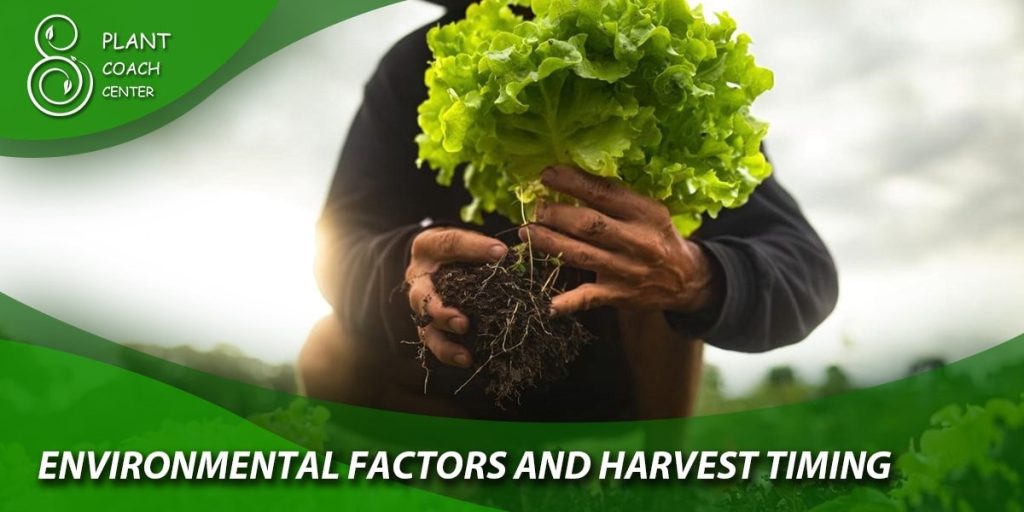
Environmental Factors and Harvest Timing
The dance of nature and timing unfolds in the world of leaf lettuce, guided by temperature and daylight.
A. Temperature’s Role: Orchestrating Optimal Moments
Temperature takes center stage in the leaf lettuce harvest symphony. Each variety has its preference, but a rule of thumb is cooler temperatures. The embrace of moderate climates fosters ideal growth and leaf development. Be wary of high temperatures – they’re the trigger for bolting, the untimely rush towards flowering. For a harmonious harvest, choreograph your plucks for the cool moments of morning or late afternoon.
B. Day Length’s Impact: The Rhythm of Light
In this botanical ballet, the length of daylight holds sway. Longer days set a brisk tempo, leading to accelerated growth. While this might seem like a joyful rhythm, it can hasten the pace towards bolting, disrupting the leafy composition. Balance is key – pay heed to the interplay between day and night. Nurture your lettuce through a symphony of well-timed light, and the encore will be a bountiful, bolting-free harvest.
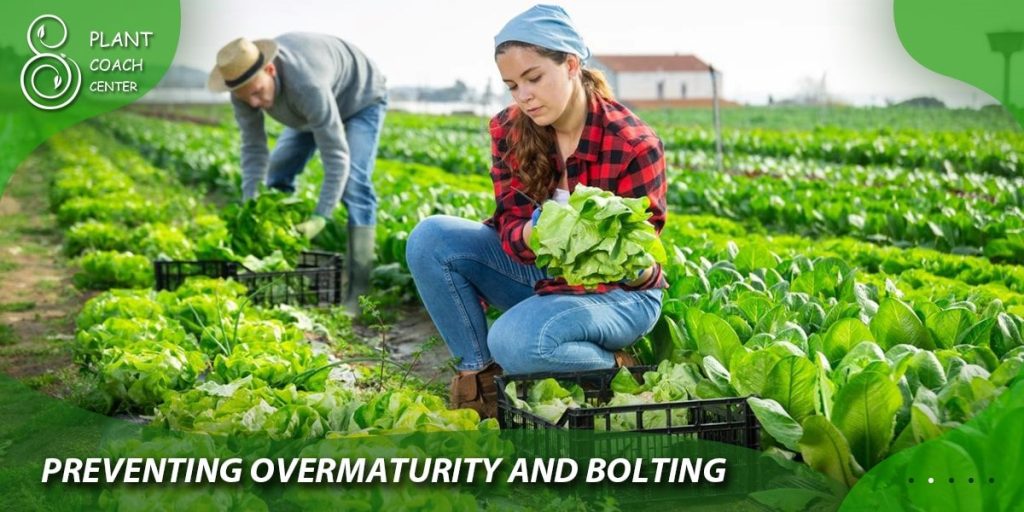
Preventing Overmaturity and Bolting: Sustaining Leaf Perfection
In the garden’s delicate dance, thwarting overmaturity and bolting is a graceful act that ensures the leaf lettuce remains in prime condition.
A. Signs of Bolting: Nature’s Unspoken Language
Bolting, akin to a plant’s cry for help, arises from stress brought on by environmental factors or age. Watch for the telltale signs: elongated stems that defy the compact rosette, the audacious appearance of flower buds amid the green ensemble, and even the subtle shift in leaf flavor and texture. By reading these whispers of distress, you can preempt the bitter aftertaste that accompanies bolting. Harvesting your leaf lettuce prior to these signals guarantees a symphony of freshness and flavor.
B. Bitterness Development: The Flavor Transformation
As lettuce matures, a transformation unfolds within its leaves. The accumulation of certain compounds can usher in bitterness, a discordant note in the harmony of flavors. Yet, this symphony can be controlled. Choose to savor the youthful sweetness of leaf lettuce by harvesting tender leaves before the bitterness takes center stage. These early leaves, with their vibrant taste and pleasing texture, promise a culinary crescendo that delights the palate and enriches your dishes.
Harvesting Techniques at the Right Time: Nurturing the Greens
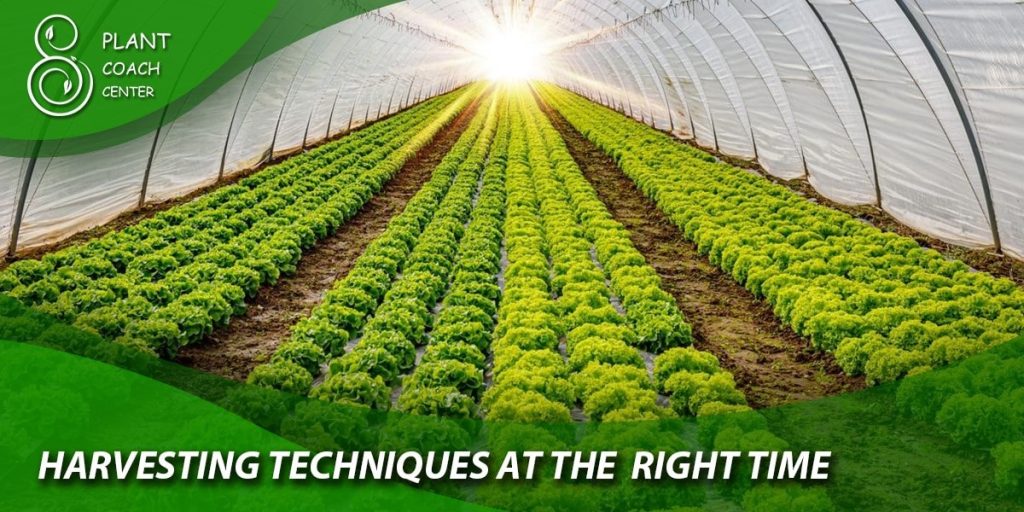
In the art of harvesting, precision and technique are the brushstrokes that capture the essence of your leaf lettuce’s journey.
A. Individual Leaf Harvesting: A Dance of Continuity
Embrace a method that echoes the rhythm of growth – individual leaf harvesting. As a maestro of the garden, pluck the outer leaves with finesse, leaving the inner sanctum untouched. This strategic act nurtures a symphony of leaves that continue their growth, ensuring an uninterrupted encore of tender greens. With each pluck, you not only savor the present but orchestrate the promise of future harvests, a virtuoso performance of abundance.
B. Whole Plant Harvesting: A Culmination of Flavor
As the crescendo of growth nears its zenith, the option of whole plant harvesting beckons. With precision, you sever the connection to the soil, capturing every leaf at its zenith of freshness. This approach is the finale, a moment of botanical triumph.
It is particularly suited for those tending to limited spaces or when an entire cohort of leaf lettuce is poised for the spotlight. Like gathering the cast for a standing ovation, whole plant harvesting ensures no leaf goes uncelebrated, embodying the plant’s journey in each harvested bunch.
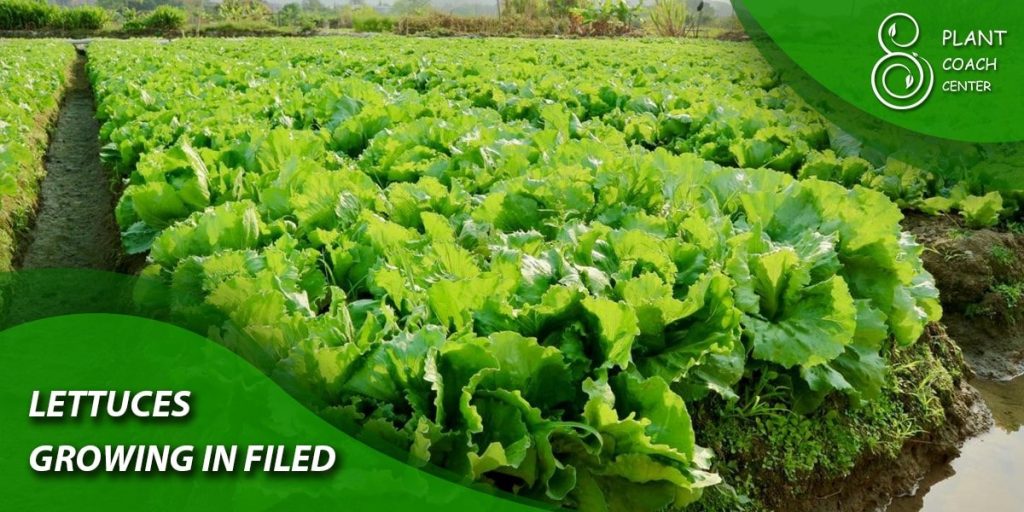
Adjusting Harvest Time for Varieties and Conditions
A. Different Lettuce Varieties
Different lettuce varieties exhibit varying growth rates and tolerances. Familiarize yourself with the specific needs of the lettuce you’re cultivating. Some types might mature faster than others, demanding more frequent attention.
B. Unpredictable Environmental Conditions
Weather fluctuations can alter the growth trajectory of your lettuce. Be prepared to adjust your harvesting schedule based on unexpected weather events. Additionally, employing protective measures like shading during hot spells can help you maintain optimal harvest timing.
Practical Tips for Timely Harvesting
A. Regular Monitoring
Consistent observation is key to timing your harvest accurately. Make it a routine to inspect your lettuce plants, noting changes in leaf size, color, and overall appearance. This practice will enhance your ability to gauge their readiness.
B. Trial Harvests
Engage in trial harvesting as your lettuce plants mature. This involves harvesting a few leaves to sample their taste, texture, and overall quality. These trial runs can guide your decision on when to conduct a full harvest.
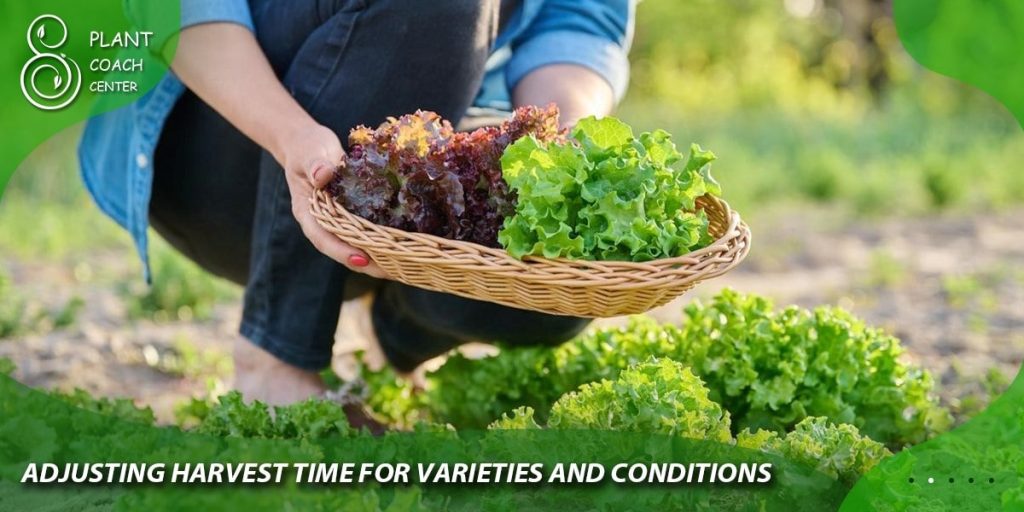
Conclusion
Timing your leaf lettuce harvest is a skill that evolves through experience and keen observation. By considering factors like growth stages, environmental conditions, and signs of maturity, you can master the art of harvesting at the peak of perfection. As you fine-tune your techniques, you’ll be rewarded with a continuous supply of flavorful and nutritious leaf lettuce for your culinary creations.
How do I know when to harvest leaf lettuce?
Look for sizable, tender leaves with a vibrant green color.
What should I consider regarding leaf size and texture?
Aim for leaves that are pliable, crisp, and not overly large.
How can I judge the readiness based on color and appearance?
Opt for leaves that are vibrant green and avoid those showing yellowing or browning.
What is the significance of growth rate observation?
Monitor steady growth; be cautious of rapid growth, which may indicate impending bolting.







